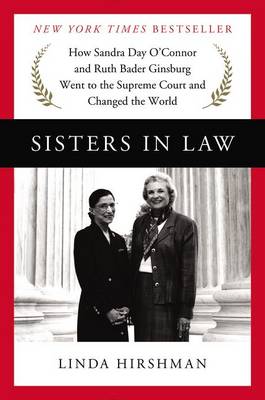
Heather
Written on Sep 23, 2015
I went into this book having read Sandra Day O'Conner's book but I didn't know much about Ruth Bader Ginsburg.
O'Conner is from Arizona. She grew up on a ranch. She went to Stanford Law School where she didn't experience...Read more
I went into this book having read Sandra Day O'Conner's book but I didn't know much about Ruth Bader Ginsburg.
O'Conner is from Arizona. She grew up on a ranch. She went to Stanford Law School where she didn't experience much discrimination for being a woman because Stanford was a fairly new school that just needed bodies. However, when she graduated near the top of her class, the only job she was offered was as a legal secretary. She became a Republican state senator and eventually a judge.
Ginsburg is from Brooklyn. She went to Harvard Law which was much more set in its discriminatory ways. The women in her class were invited to attend a dinner where they were forced to explain how they justified taking a seat in law school that should belong to a man. She went on to argue six major cases in front of the Supreme Court that helped establish legal equality for women in the 1970s. She then became a federal judge.
What I noticed over and over in this book was that even though they were discriminated against as women they had extraordinary privilege otherwise. Each of them had connections with several prominent politicians and/or political advisors who they lobbied to advance their careers. They have stories that prove that success is based a lot on who you know.
Of the two stories I found Ginsburg's life more interesting. It is good to remember what rights we take for granted now that were so controversial in my lifetime. The importance of diversity on the court becomes apparent in discussions when male justices reveal that they think the lives of most women are similar to the lives of their wealthy wives and daughters. Later they were unable to sympathize with a 13 year old girl strip searched at school.
This author did a good job of making fine points of case law accessible and understandable for non lawyers.
This review was originally posted on Based On A True Story
